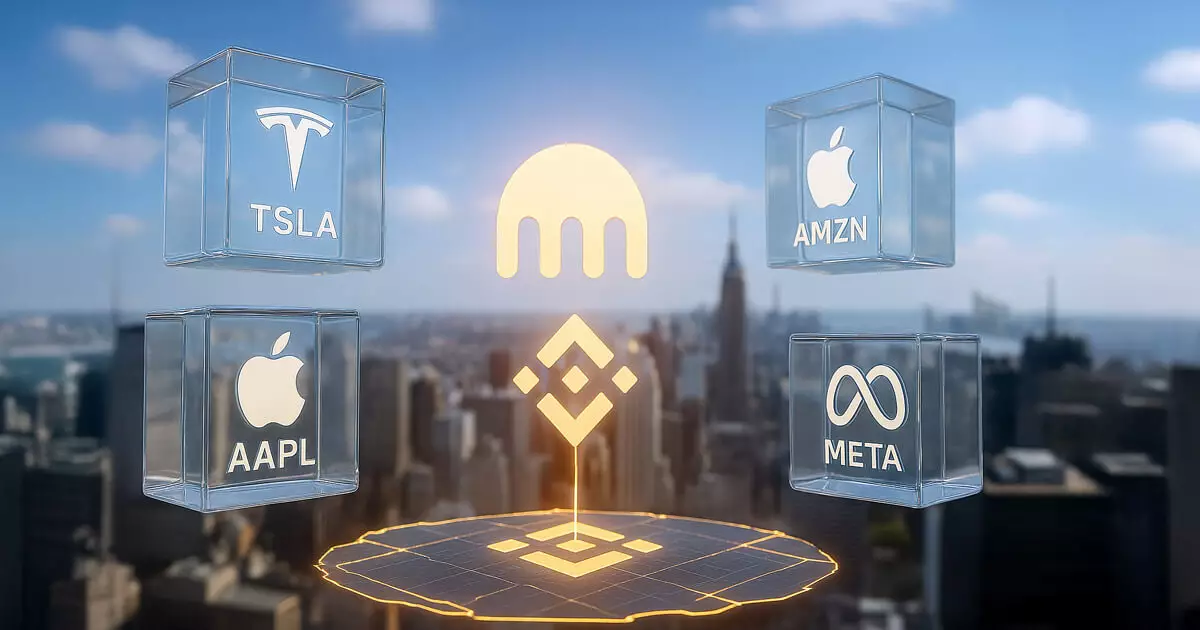There is a seismic shift happening within the financial landscape, driven by technological innovation and strategic ambition. Kraken’s recent expansion into Binance-backed BNB Chain with its xStocks product is far more than a simple feature update; it symbolizes a burgeoning movement that seeks to decentralize and democratize access to equities on a global scale. This move challenges the long-standing hegemony of traditional exchanges, exposing their vulnerabilities and forcing an urgent rethink of the existing financial architecture. No longer can legacy systems rely solely on centralized, jurisdiction-restricted models; the future belongs to fluid, interoperable, multichain ecosystems capable of instant global settlement.
By integrating tokenized US equities such as AAPLx and TSLAx into BNB Chain’s DeFi protocols, Kraken is paving the way for a new form of programmable assets. These BEP-20 tokens are designed to seamlessly connect with decentralized protocols, enabling users worldwide to deposit, withdraw, and transfer equity tokens without traditional gatekeeping. This interoperability hints at a future where financial sovereignty is not confined by borders or legacy custodial institutions. The implications extend beyond convenience—these tokenized stocks are now ‘programmable settlement primitives’ that can be integrated within a broader, composable DeFi environment, blurring the lines between traditional and decentralized finance.
The Disruption of Old Power Structures in Financial Markets
This initiative directly challenges the entrenched dominance of traditional exchanges like the NYSE and NASDAQ, which have historically relied on centralized liquidity pools, structured trading hours, and custodial frameworks. These institutions have long benefited from inherent advantages—familiarity, regulatory barriers, and built-in revenue streams like trading fees and information sales. However, the rise of 24/7, borderless trading platforms that leverage blockchain technology threatens to erode these advantages and democratize access to capital markets at an unprecedented scale.
The shift toward constant, seamless trading is disruptive to established players. It accelerates the move away from slow, jurisdiction-bound settlement processes toward instant, atomic transactions that can occur anywhere in the world. Traditional institutions face an existential challenge: either they adapt rapidly to this tokenized, decentralized reality or they risk obsolescence. The fear is not merely losing market share but also losing the very core of their revenue models, as blockchain-based platforms bypass intermediaries and open new revenue streams—such as decentralized lending, derivatives, and asset management—outside their control.
Tokenization: Catalyst or Pandora’s Box for Future Risks?
While proponents herald tokenized equities as the dawn of an increasingly efficient, accessible financial future, skeptics rightly caution against unbridled optimism. The projected $30 trillion valuation for tokenized assets by 2030 is impressive but also intimidating. Such exponential growth could magnify existing volatility and create new systemic risks. The 24/7 nature of these markets, for example, may amplify sudden shocks that traditional markets would buffer through hours of closure—a potential Pandora’s box that could destabilize global finance if not properly managed.
Furthermore, the proliferation of multichain assets and protocols raises serious concerns about security and oversight. How do regulators and institutions ensure transparency, prevent fraud, and maintain stability in an environment where assets can move instantaneously across jurisdictions and protocols? The delicate balance between innovation and regulation will define whether this disruptive wave strengthens or destabilizes global financial stability. Traditional power centers may find themselves increasingly outflanked unless they embrace this evolution strategically, rather than resisting or overly restricting it.
Kraken’s strategic move exemplifies a broader industry pivot that could reshape the financial landscape. Its success or failure will hinge on whether mainstream institutions can integrate the benefits of tokenization while managing the risks inherent in this disruptive evolution. The potential for a $30 trillion market, coupled with the shift towards multichain, programmable assets, signals a future where traditional finance must either innovate or be left behind in the dust of a rapidly changing world.


Leave a Reply